Managing a single, complex project feels like a Herculean task when you nail the project deadline with a high-quality output. But what if you took that experience up tenfold?
Handling multiple projects, or portfolio project management, is an entirely different beast. It’s a juggling act that could lead to chaos, missed deadlines, and the dreaded burnout without the right tools and processes.
But here’s the real deal: Portfolio project management doesn’t have to be an uphill battle.
You might ask, “How can I navigate the maze of multiple projects without getting lost? What’s the secret sauce to keep everything on track and maintain my sanity?”
Well, you’re in for a treat.
Today, we’re taking the mystery out of portfolio project management. We’re dishing out the best practices, breaking down the most efficient processes, and sharing the most effective tools you need in your toolkit.
Let’s dive into the nitty-gritty of portfolio project management best practices. We promise it’ll be a journey of discovery, empowerment, and many ‘aha!’ moments.
What is portfolio project management?
So, what is this beast called portfolio project management anyway?
Well, here’s the lowdown.
Portfolio project management (PPM) isn’t just about running several projects simultaneously. It’s about strategically managing a collection of projects as a single portfolio that aligns with your business objectives and goals.
Think of it as conducting an orchestra, where each project plays its part in harmony with the others to create a beautiful symphony of success.
You might be wondering, “What are the moving parts in this well-oiled machine?”
Here are the key components:
- Strategic alignment
- Governance
- Prioritization
- Risk management
- Resource allocation
Together, these components help you achieve your business objectives by making informed decisions, prioritizing effectively, managing potential risks, and using resources (both human and non-human) efficiently.
The crux of the matter is that these components are interdependent — neglecting one is akin to trying to run a machine with a missing cog. It just doesn’t work.
And where does your role as a portfolio manager come into play? You are the linchpin, or the conductor of the orchestra, if you will. You’re the one making sure all the components play nicely together.
But here’s the kicker: it’s not just about management. A portfolio manager must also be a leader, seeing the big picture, guiding your team through challenges and uncertainties, and steering toward a successful outcome.
Benefits of portfolio project management
So, why should you bother with this whole portfolio project management thing? Well, the answer is simple — it’s all about the benefits. And trust us, there are plenty.
This strategic approach to managing multiple projects helps you keep your finger on the pulse of all projects and understand if they work harmoniously towards achieving your organizational goals.
Think about it like a compass or map that guides you or keeps you on track as the journey progresses. It’s a recipe for success when you can cherry-pick projects with the greatest impact potential and align them with your business goals.
The result? The ability to make more informed decisions and maximize your return on investment (ROI) — every entrepreneur’s dream, right?
But it’s not just about the outcome. What about the inputs that help you accomplish these goals?
Well, portfolio project management provides a structured approach to resource allocation, making sure every project is prioritized correctly and gets the right amount of love and attention needed to thrive.
So, if you’re planning to start a business, keep this in mind — you’ll want to harness the power of a portfolio project management system early one. Whether running a large business with many projects or a small business with limited resources, portfolio project management is your ally.
The big players with large teams can ensure they’re investing their resources in the right projects, while the small players can make the most of what they’ve got. It’s a win-win.

Best practices in portfolio project management
1. Strategic alignment with your business objectives
Managing projects is like doing a puzzle — each project must fit perfectly, contributing to the bigger picture of your success.
Start by clearly defining your business objectives. What are you trying to achieve? Does your organization have OKRs? Are you trying to bring a new product to market, or are you doubling down on your marketing efforts for existing products?
Once you have the answers to some of these questions, it’s time to review each project in your portfolio.
You can ask yourself, “How does this project contribute to my objectives?” If a project doesn’t align, it might be time to rethink.
Remember, it’s not just about doing things right, but also about doing the right things.
With over 5.3 billion active internet users worldwide, it is crucial to align your portfolio of projects with your business objectives. This ensures that every project you undertake serves a strategic purpose and contributes to the overall success of your organization.
2. Prioritize projects with the most value
You need a method to rank the priority of the many projects begging for your attention.
Think of it as your project’s America’s Got Talent moment. Which one gets the golden buzzer, and which ones need to wait for the next round?
To put prioritization into action, use a simple scoring system.
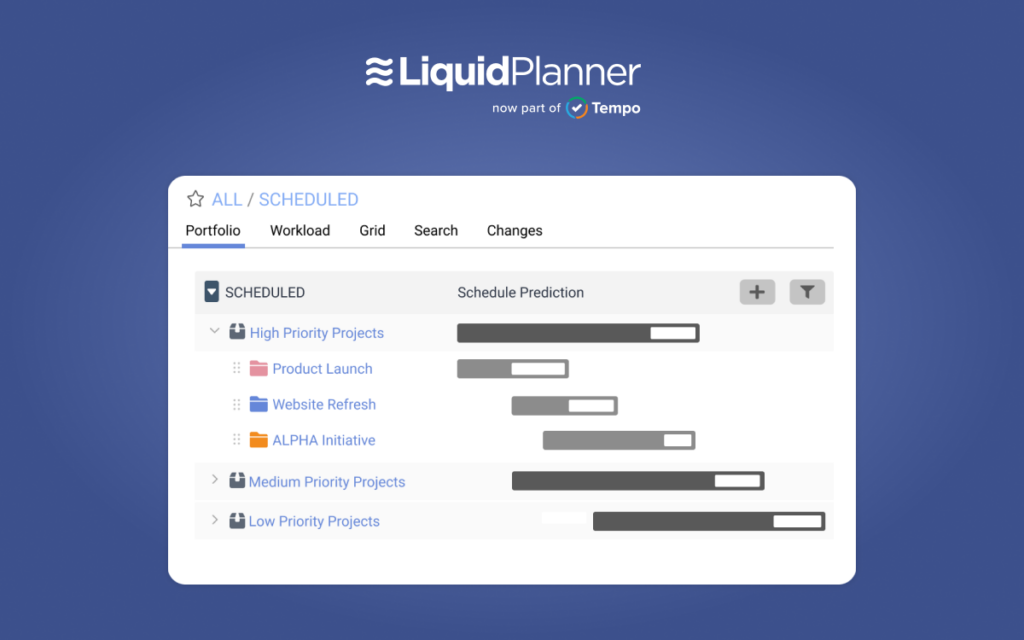
Rank each project based on potential impact, resource requirement, risk, and contribution to the goal. The projects with the highest scores get top priority.
Simple, effective, and fair. Some project management software solutions, like LiquidPlanner, have priority-based planning built in so you can drag-and-drop to update your portfolio (more on this later).
3. Maintain a mix of projects to balance risk and return
Like a well-balanced financial portfolio, your project portfolio needs a mix to balance risk and return.
It’s wise to avoid putting all your eggs in one basket. It’s all about finding the sweet spot between high-risk, high-reward projects.
Look at each project’s potential ROI and balance it against the associated risks. Don’t shy away from high-risk, high-reward projects, but hedge them with safer bets to maintain a healthy equilibrium.
The safe bets help keep things running smoothly, while the high-risk bets are often the most fruitful regarding return opportunities.
4. Establish clear roles, responsibilities, and decision-making processes
Time to outline the ground rules. Governance and oversight of projects are all about defining who does what, when, and how.
From day one, make sure everyone knows their role and responsibilities.
Set up regular meetings or check-ins to keep everyone on track for better decision-making and problem-solving. And most importantly, create a culture where everyone feels comfortable raising issues and suggestions as you work towards a common goal.
5. Conduct regular portfolio reviews
Regular reviews are like a health check for your portfolio. They help you spot any hiccups, make the necessary adjustments, and ensure everything progresses.
Schedule these regular portfolio reviews into your calendar. They could be monthly, quarterly, or whatever frequency works best for you.
During these reviews, assess project performance, identify potential issues, and make necessary adjustments to resource allocations. Consider it a tune-up for your portfolio to keep it running smoothly. Not to mention, resource needs can change as projects progress.
6. Manage expectations and foster collaboration
Finally, let’s talk about your stakeholders. These folks have a vested interest in your projects, so keeping them engaged is crucial.
It’s all about managing expectations, fostering collaboration, and making sure everyone’s on the same page.
Be proactive with communication by regularly updating stakeholders on project progress, successes, and challenges. Leverage dashboards that surface key project health metrics like capacity, resource allocation, and timelines. Also, invite their input and feedback — it not only makes them feel involved but could also provide valuable insights.

Key processes in portfolio project management
So how do you get the ball rolling with project portfolio management (PPM)? Let’s break it down.
Suppose you’re launching a new eco-friendly sneaker line. Here’s what your PPM processes might look like:
- Strategic planning: Start by setting your sights on what you want to achieve. Maybe you want to be the top sustainable sneaker brand within five years. This big-picture goal will guide your whole journey.
- Project identification: Next, consider all the projects you’ll need to undertake to reach your goal. For instance, you might need to source sustainable materials, design the sneakers, start manufacturing, build an e-commerce website, and plan a marketing campaign.
- Project categorization: Now, you’ll categorize those projects. Some might be design-related, some might be marketing initiatives, and others could fall under supply chain management. Categorizing them helps you manage them more effectively.
- Project evaluation: It’s time to examine each project closely. Which ones will help you reach your goal fastest? Which ones are most cost-effective? This step helps you decide which projects are worth your time and resources.
- Project selection: After evaluating, pick the projects you want to pursue. You can’t do everything at once, so choose the ones that align most with your goal and are appropriate, given your resources.
- Portfolio balancing: Now, take a step back and look at the big picture. Do your projects cover all the bases and consider the risks and returns? Make sure you have a balanced mix to guide you toward your goal.
- Resource allocation: You’ve picked your projects. Now, assign the work. Maybe you need to hire a designer or allocate a budget for a marketing campaign. This step guarantees each project has what it needs to be successful.
- Performance management: Keep track of how your projects are doing. Are they on schedule? Are they achieving what you wanted? Regular check-ins keep you informed and ready to adapt if necessary.
- Portfolio review: Now and then, take a moment to review your whole portfolio. Things change, and you might need to tweak your projects or goals.
- Benefits realization: Finally, celebrate your wins! Keep an eye on the benefits each project is bringing in and how they’re helping you reach your goal.
It’s important to note that these processes aren’t sequential, but rather iterative and ongoing. That way, it allows for continuous improvement and adaptation to changes in your organization’s strategy and whatever’s going on in the macroeconomic environment.
In other words, these steps aren’t one-and-done. You’ll likely loop back through them often as you tackle your strategic goals.
Tools for Effective Portfolio Project Management
Managing a complex project portfolio is no small task. If you start tracking work in a spreadsheet, you’ll quickly find yourself overwhelmed. Luckily, there’s a wide range of tools to help you manage your project portfolio, and they come in all shapes and sizes.
Some tools are industry-specific, like fleet management tools that include Electronic Logging Devices (also known as ELD devices), which are ideal for transportation or logistics companies.
The real-time tracking and reporting capabilities help project managers streamline the delivery process and optimize driver routes, improving efficiency and reducing fuel consumption.
Of course, these industry-specific tools cater to these sectors’ unique needs and requirements. But don’t worry. Most PPM tools are flexible and adaptable, so you can tailor them to your unique projects and processes.
When choosing a PPM tool, you’ll want to look for a few key features:
- Reporting capabilities to analyze project performance and generate insightful reports.
- Collaboration features that allow team members to communicate within the tool.
- Integrations with other software you use, like your CRM or accounting software.
- Resource management functions to easily allocate and track resources.
- Project tracking to visualize the progress of your projects.
- A simple and intuitive user interface.
1. LiquidPlanner
Effectively handling multiple projects often feels like a challenging juggling act as you strive to meet various resource requirements and deadlines without dropping the ball.
And that’s where LiquidPlanner comes into play. It’s the only project management solution that dynamically adapts to change and manages uncertainty to help your team plan, predict, and achieve your desired outcomes.
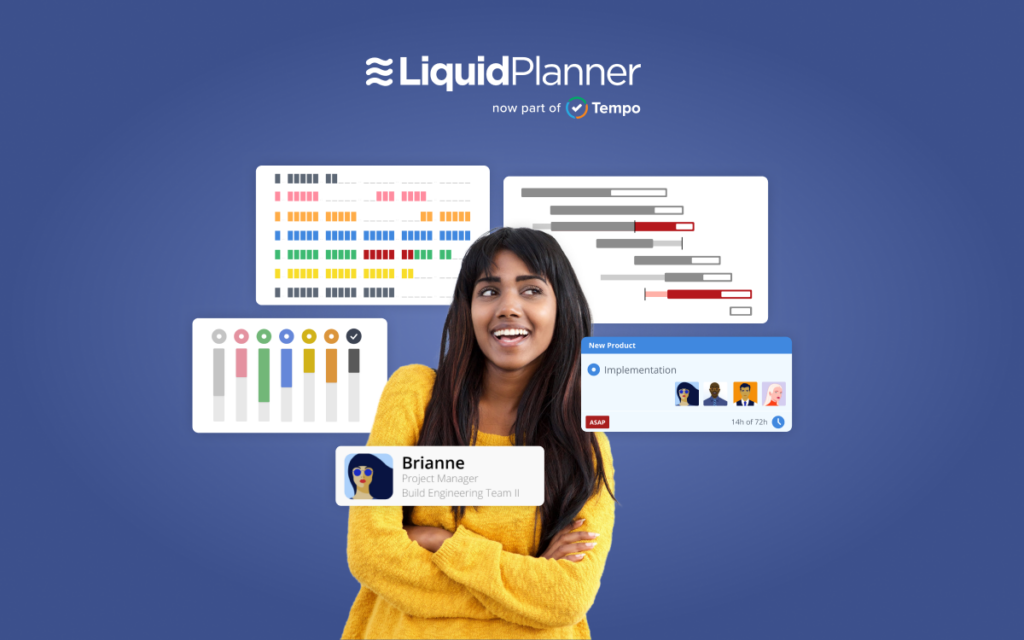
LiquidPlanner’s predictive scheduling engine considers team availability, work estimates, and priority across your portfolio, clearly showing what’s possible and when tasks and projects will realistically cross the finish line.
You get a bird’s eye view of all ongoing activities and can easily prioritize tasks. Plus, with real-time data available at your fingertips, you can optimize your team’s capacity and consistently deliver high-quality work within specified timelines.
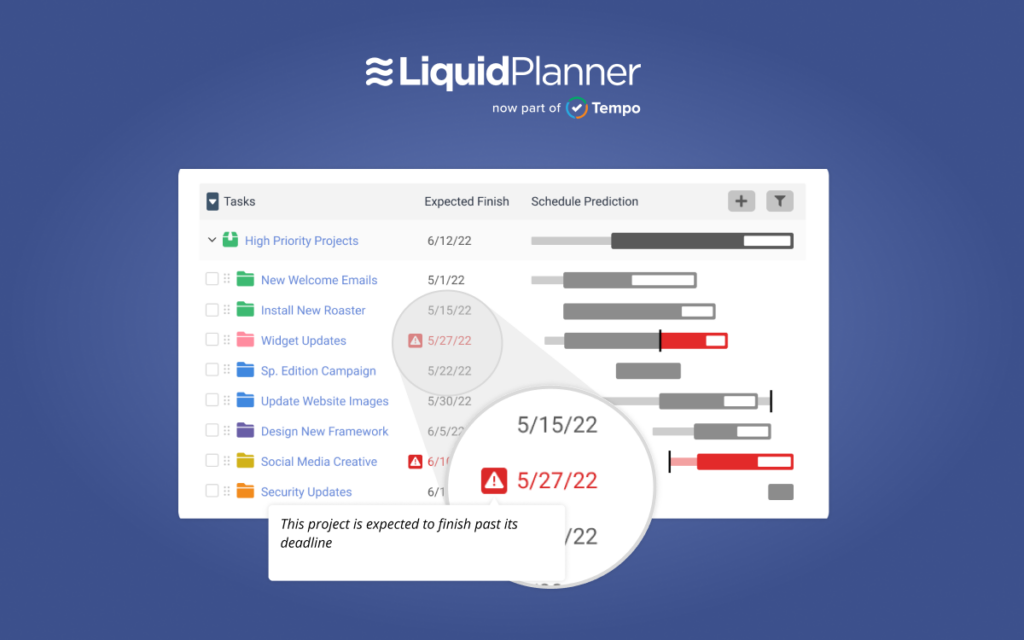
And one of the million-dollar questions all stakeholders ask is: when will the project finish?
Thanks to LiquidPlanner’s sophisticated Monte Carlo simulations, you can quickly see the expected start and finish dates calculated for you in real time.
In other words, you can unlock insight into when projects will cross the portfolio finish line, and manage uncertainty in your schedule along the way. We promise it’s not too good to be true. Try it out for yourself with a free trial.
2. Zeda
Customer feedback plays a crucial role in determining project priorities within a portfolio.
By analyzing customer feedback, you can identify recurring themes, requests, or pain points that require attention. These insights help you and your stakeholders understand which projects align with customer needs and prioritize them accordingly.
So if you’re struggling to prioritize projects in your portfolio, Zeda is your new best friend.
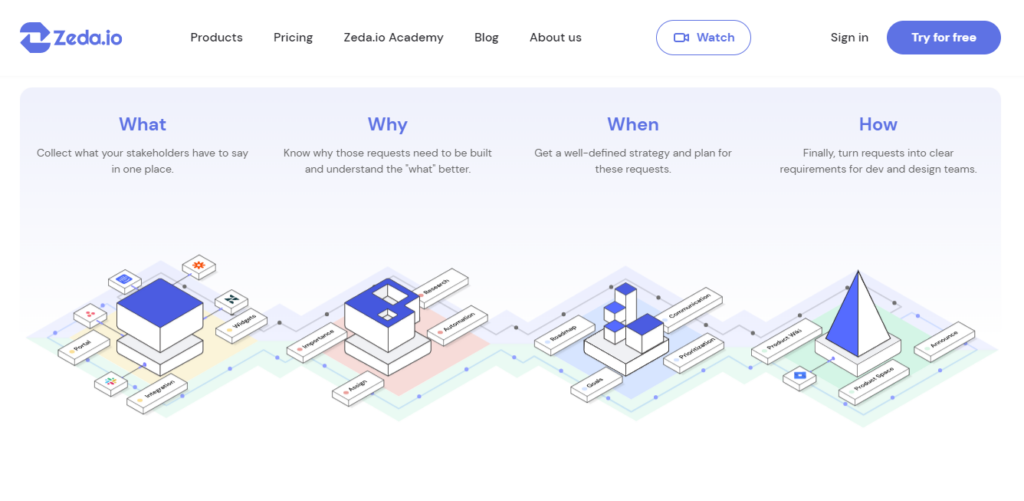
Uncover the true problems that matter to customers and decide what to build next with AI-enhanced product insights and simple integrations with your existing tech stack.
You’ll unlock key information about what, why, when, and how to create new projects to drive successful outcomes that make your customers happy and boost your bottom line.
3. Tempo Timesheets
Time tracking serves as a vital metric for checking project health.
Although it seems like a basic measurement, it helps track other key performance indicators (KPIs) such as project progress, task completion rates, and overall project efficiency.
By analyzing time-tracking data, you can identify potential risks, address bottlenecks before they become bigger issues, and take proactive measures to keep projects on track.
Multiple clock-in and clock-out apps can accurately track workers’ time and keep track of everyone’s working hours, with Tempo making the top of the automated time-tracking list.
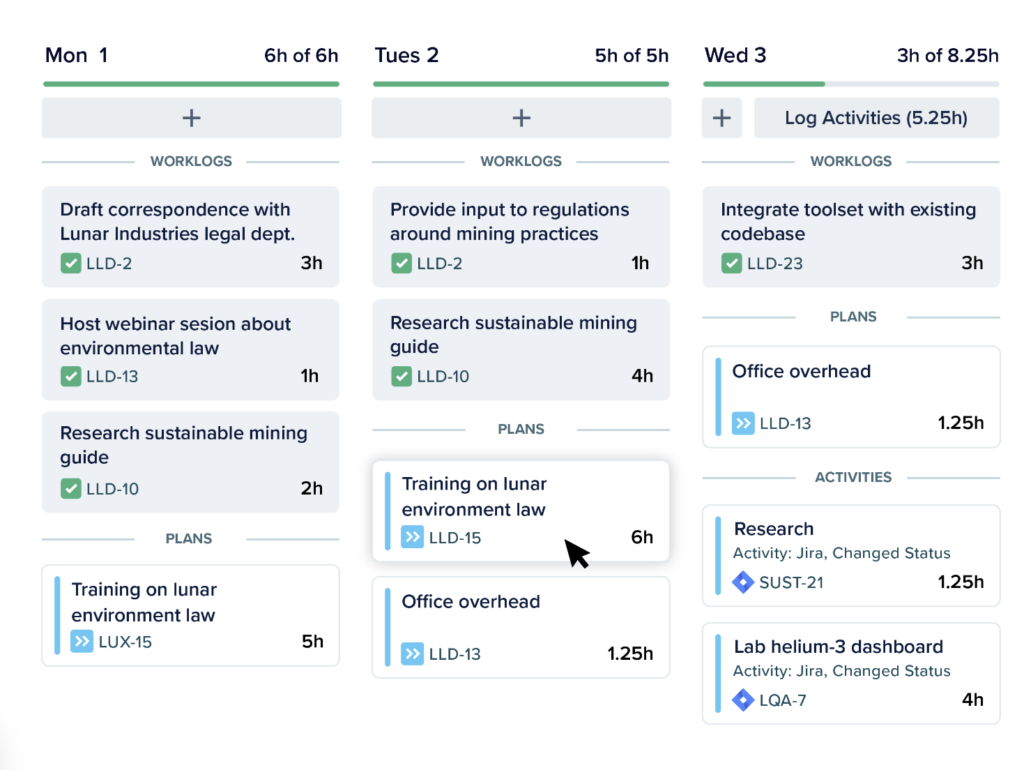
With powerful features that include automated time-tracking suggestions and integrations with popular tools like Google Calendar and Slack, Tempo gives you access to everything time-related you could ever need.
Say goodbye to wasted time with Tempo by unlocking a more accurate understanding of where time is invested across teams, projects, and initiatives.
Wrapping up
And there you have it. Managing a portfolio of projects can be complex, but with the right strategies and tools, you can navigate uncertainty and deliver exceptional results.
Embrace these best practices to maximize your organization’s potential, adapt to changing circumstances, and achieve successful project outcomes.
If you’re overwhelmed, break down your portfolio into manageable components to help you establish clear goals and prioritize tasks. And never underestimate the power of portfolio project management software. Let LiquidPlanner do the heavy lifting for you.
Investing in the right tools will help you hit more deadlines, reduce team burnout, and boost your bottom line. What more could you ask for?
About the author
Alex Sloane is a freelance writer and content optimization specialist. He has worked with dozens of SaaS and B2B companies to capture more organic traffic from better content. Recently making the full-time jump to freelance work, Alex loves forming new partnerships.
 Schedule a demo of LiquidPlanner with a product expert today
Schedule a demo of LiquidPlanner with a product expert today








